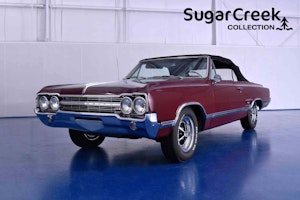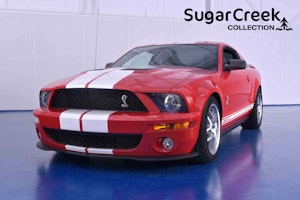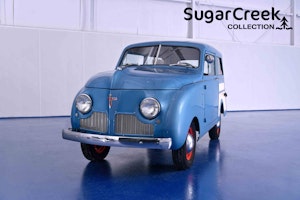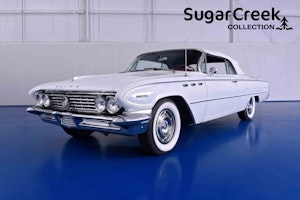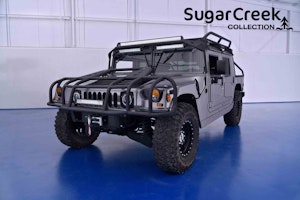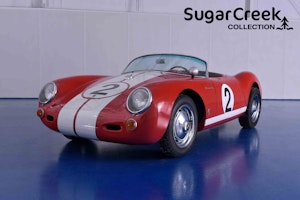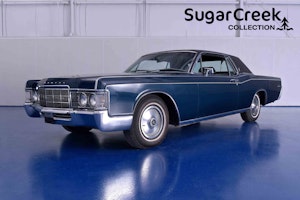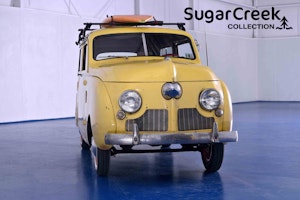Media | Articles
Cars During Wartime: A look at Detroit’s contribution to victory
The classic convertibles and military vehicles you may have seen participating in Memorial Day parades and ceremonies are reminders of the enormous role the auto industry played in wartime, particularly WWII. America’s entry into the global conflict profoundly changed the country’s relationship with the automobile for that period and had a lasting impact.
The lack of 1943-1945 model-year cars reminds us that the country’s great auto industry, by government decree, ceased civilian car and truck production in early February 1942 and switched to producing a wide gamut of military hardware. With raw materials diverted for wartime production, carmakers substituted painted trim for chrome on final 1942 models, giving them a drab appearance.
Chevrolet ended the abbreviated 1942 model year in No. 1 position with about 255,000 cars built, (down from 1 million for 1941). Ford was in second with 160,000 (down from 691,000) and Plymouth built 152,000 (down from 522,000). Not all cars went to customers, as the government needed cars and trucks to mobilize here and overseas.
Factories began a rapid changeover to producing everything from airplanes to artillery shells. According to “Chronicle of the American Automobile” by James Flammang, carmakers produced 13 percent of all Allied war material during WWII. A list of what carmakers built for the war would fill pages. Some companies had already been producing hardware, such as Packard’s aircraft engines. “Manning” the assembly lines were also now hundreds of thousands of women, perhaps best symbolized by Norman Rockwell’s renowned painting, “Rosie the Riveter.” The woman who modeled for that painting, Mary Doyle Keefe, was a 19-year-old telephone operator. She died this past April at 92.
Detroit also applied its engineering expertise, adapting automotive hardware for tanks while more specialized powertrains were developed. Some tanks used dual Cadillac V-8s and GM’s Hydra-matic transmission, but a Chrysler powertrain adaptation was even more fascinating. Chrysler engineered the A-57 engine for the M4A4 Medium Tank, better known as the Sherman, by essentially building five 250 cu. in. flathead six-cylinder car engines around a central shaft. The resulting 30-cylinder monster produced 470 hp.
Marketplace
Buy and sell classics with confidence
Packard also made PT boats and their aero-based engines. Ford built nearly 8,700 Boeing B-24 Liberator bombers at the Willow Run, Mich., factory and then sold them to the government. Willys and Ford together built about 650,000 Jeeps, the iconic light patrol vehicle that had been developed by American Bantam.
Meanwhile, Americans learned to get by with far less car usage. Fuel rationing and restrictions on pleasure travel saw to that. Even maintaining a car became a challenge, as replacement parts production was halted and rubber for tires was used for the war effort.
“Cost-plus” contracts provided profits for carmakers to develop new civilian models after the war. Carmakers (and other suppliers) touted their contributions to war supply in advertising, a kind of brand-centric marketing that helped maintain consumer awareness while also stoking demand for postwar cars.
Peacetime Production
Civilian car production resumed in summer 1945, and the pent-up demand created a seller’s market. The 1946 cars were essentially 1942 models with styling updates. In the race to be the first with all-new designs, the winner was newcomer Kaiser-Frazer. Formed by industrialist Henry J. Kaiser and William Frazer, who had been president of Graham-Paige Motors, the new company leased the Willow Run plant vacated by Ford. Two brands, Kaiser and Frazer, were offered, but just Kaiser after 1951. Howard “Dutch” Darrin penned the designs, including the daring but ill-fated Kaiser Darrin roadster.
Kaiser built cars until 1955 but would ultimately figure more prominently with its acquisition of Willys-Overland. Eventually called Kaiser Jeep Corporation, the company used civilian Jeep production to launch a whole new and long-lasting vehicle category, the SUV.
Some things carried over from wartime production. Crosley’s line of mini cars for a time used the sheetmetal copper brazed (“CoBra”) engine that had powered stationary equipment in the war. Dodge adapted its WC military truck into the Power Wagon for the civilian market and built it essentially unchanged through the 1960s. Four-wheel drive and power takeoffs made these workhorses ideal for big jobs, such as installing electric utility poles.
Wartime engineering results could also be seen in the new high-compression engines introduced in the late 1940s, starting an escalation in horsepower and the focus on performance and racing. Car design was also impacted. For example, the Lockheed P-38 Lightning was perhaps the most sensational looking fighter plane in the U.S. arsenal. General Motors built engines for it, with Cadillac taking credit in a series of print ads. After the war, the P-38’s dual-tail design inspired the emergence of tailfins on the 1949 Cadillacs, and the plane’s triple-fuselage construction influenced the design of Studebaker’s 1950 “bullet nose” models.

